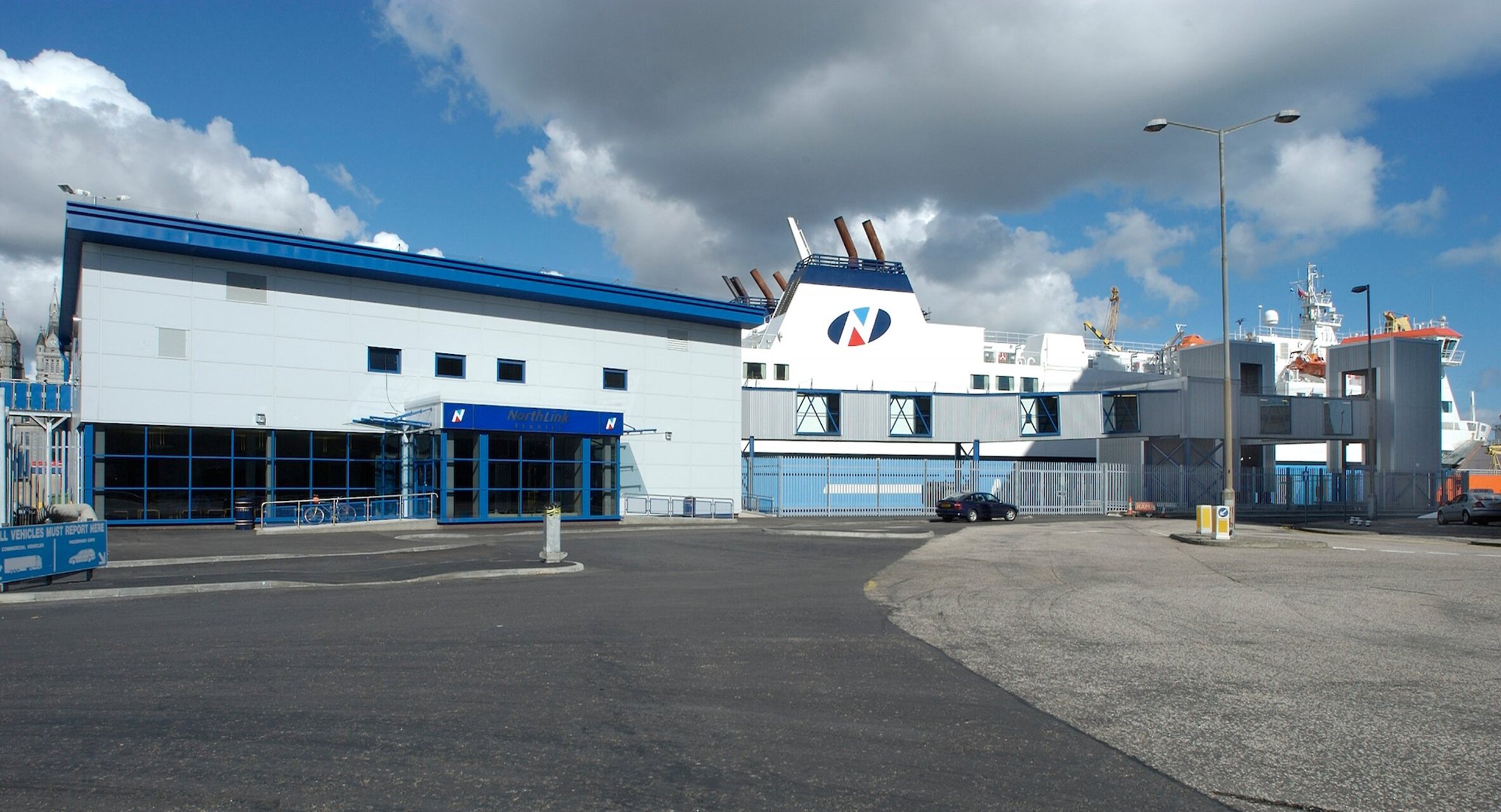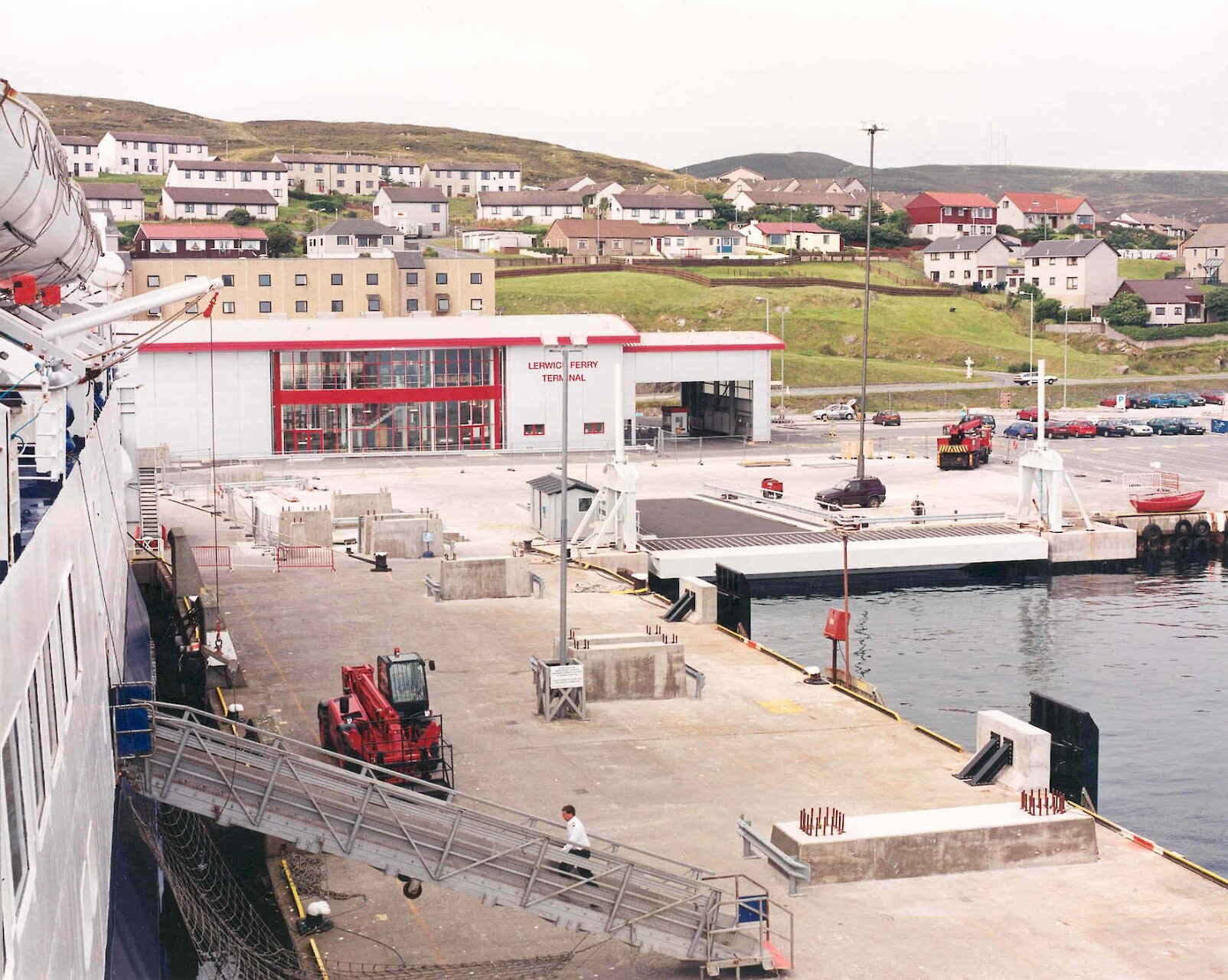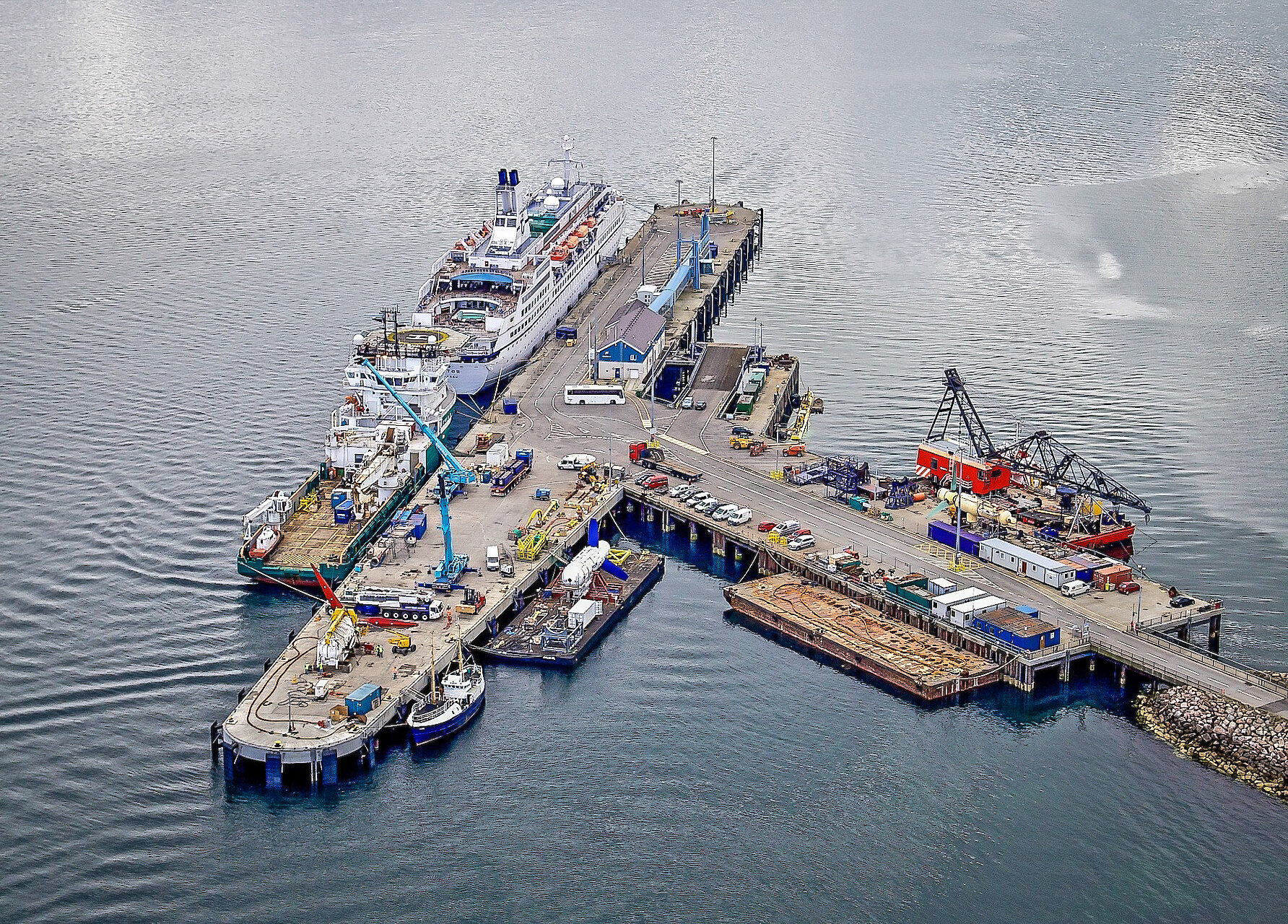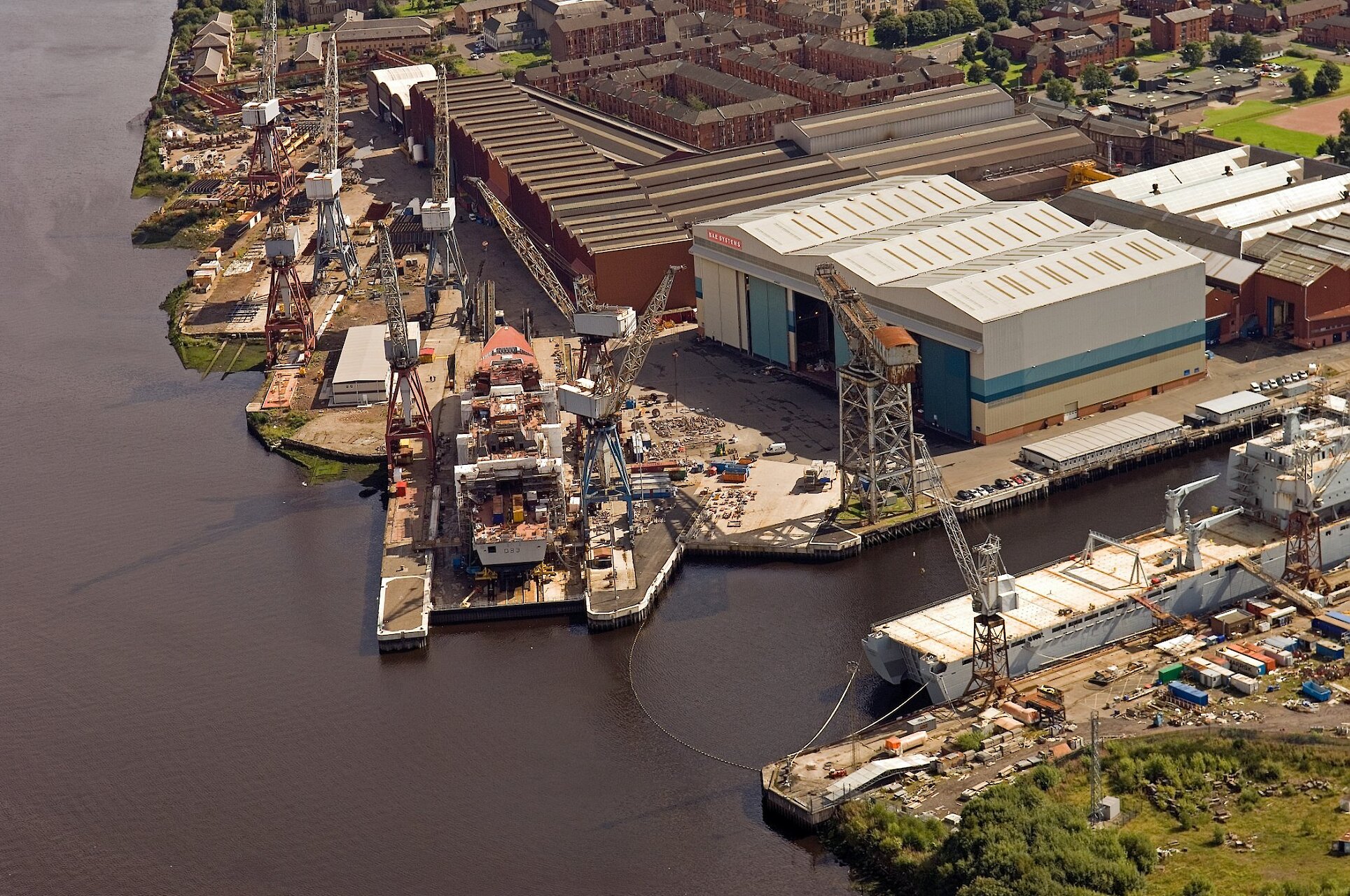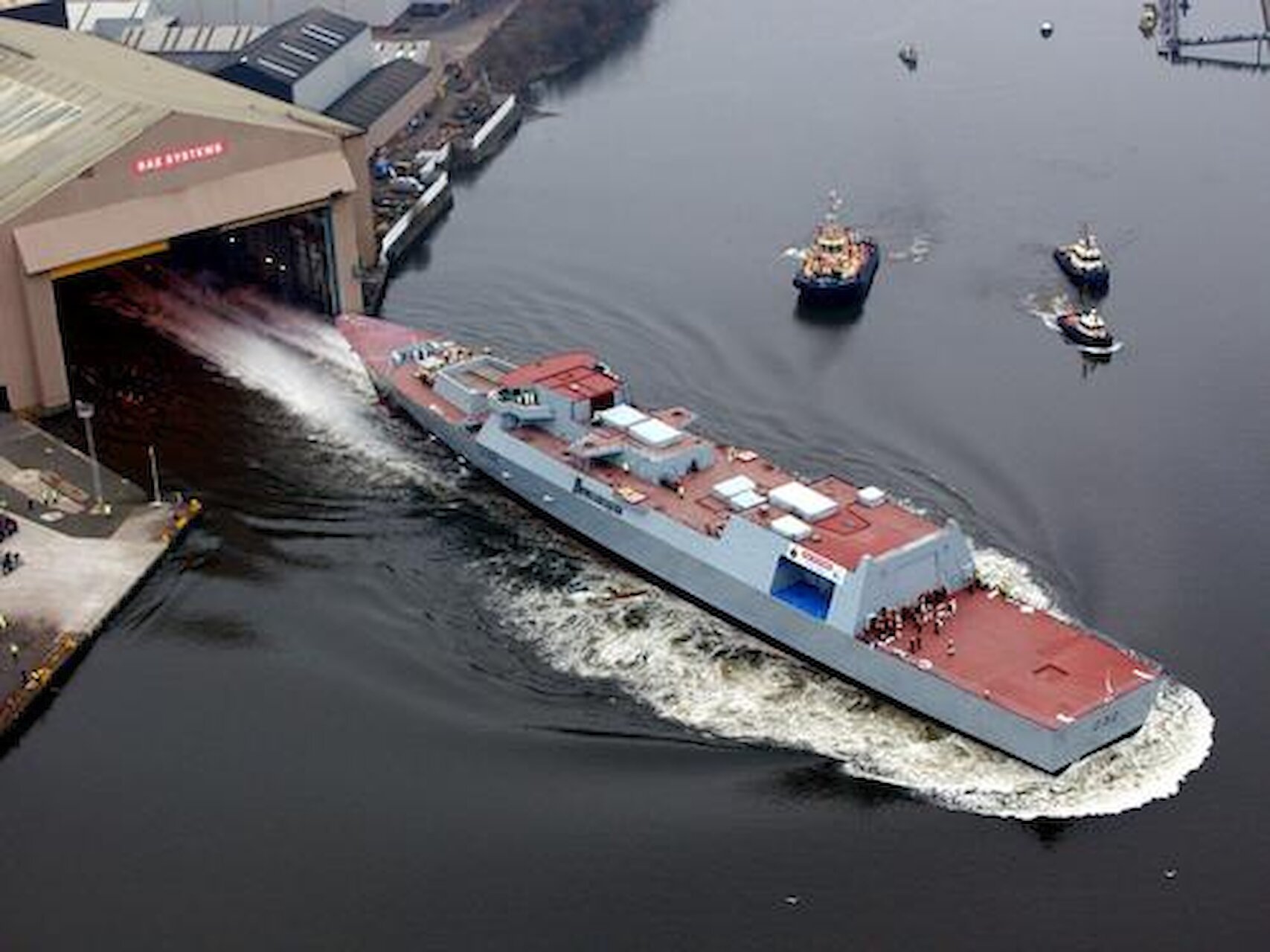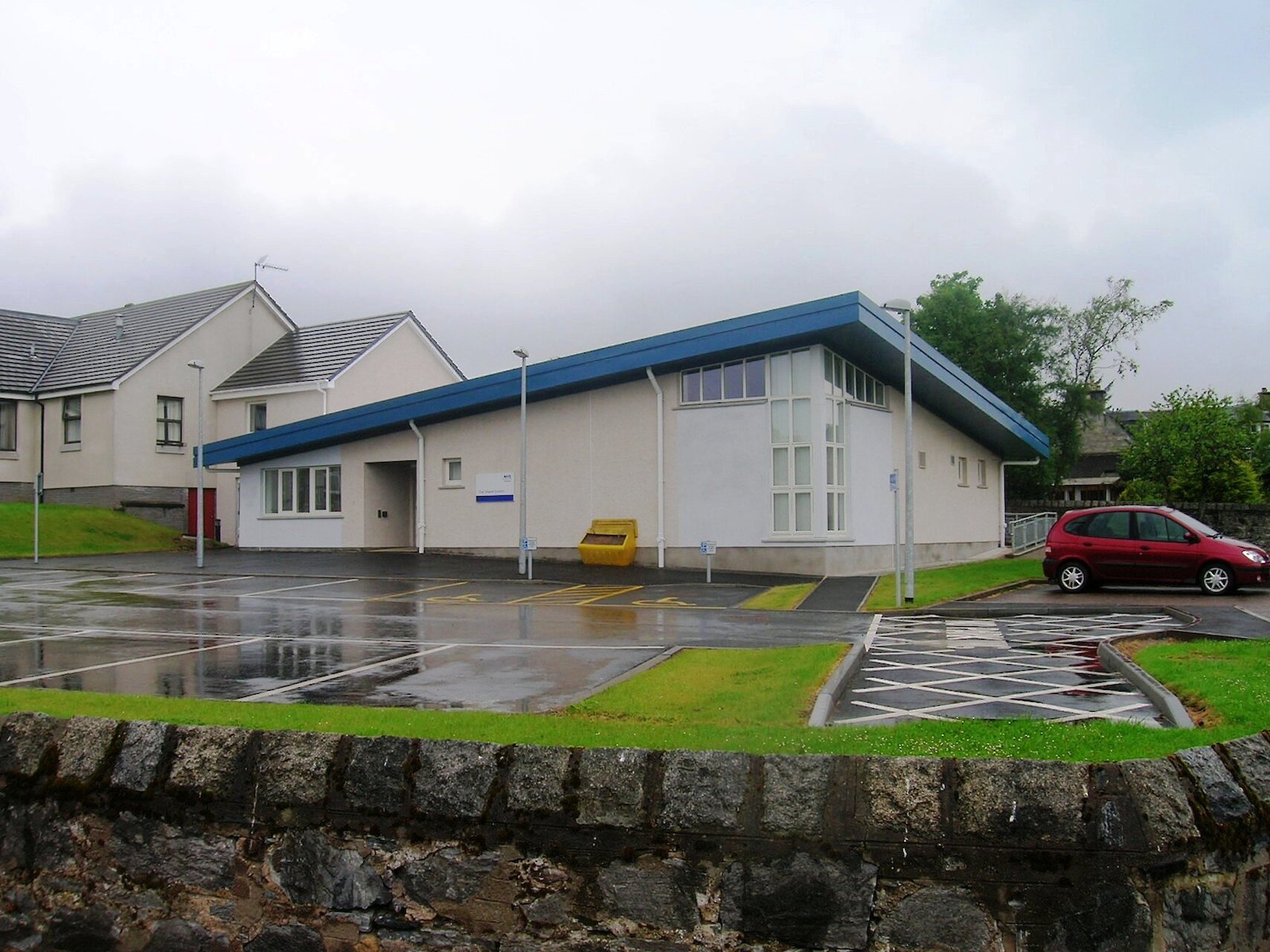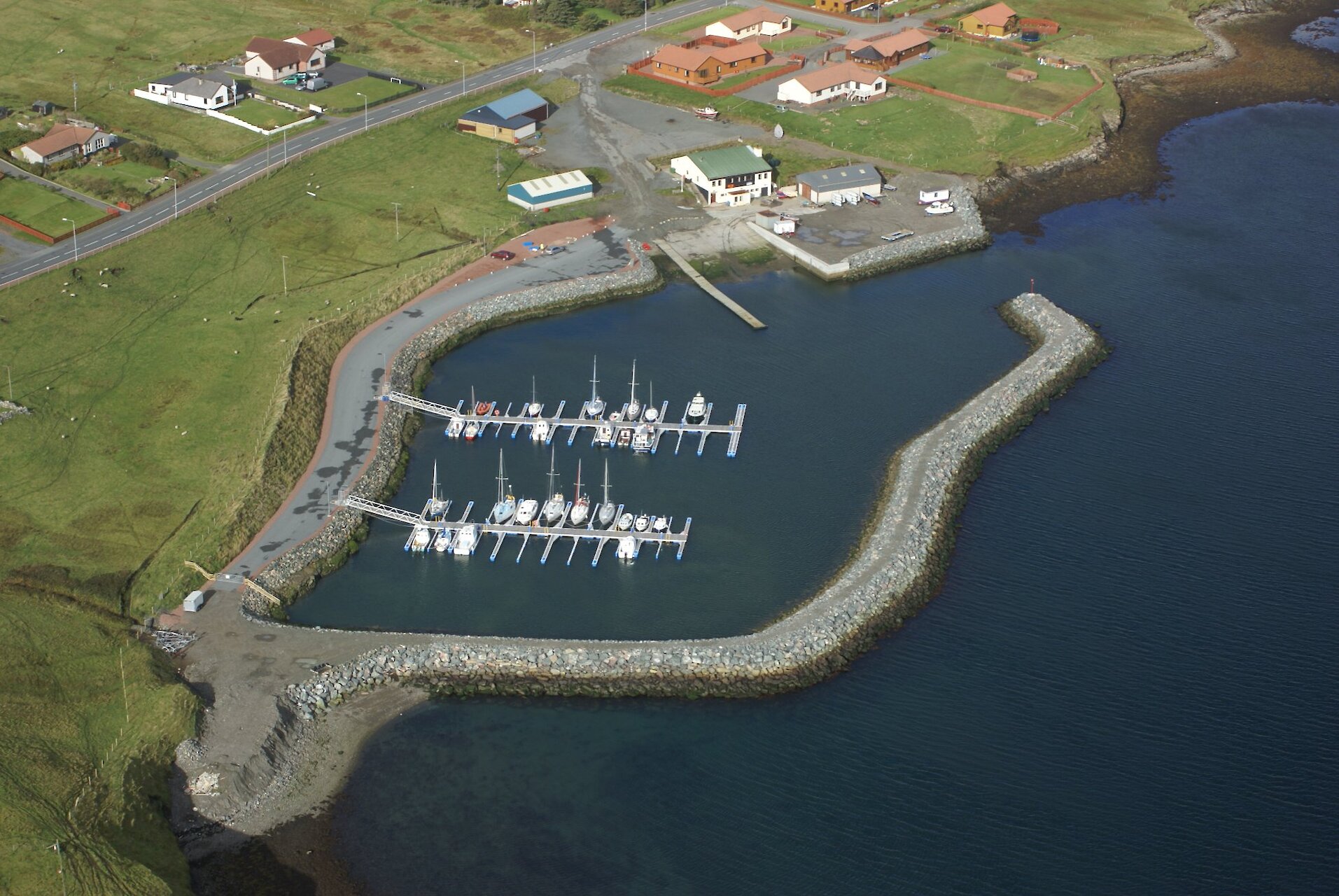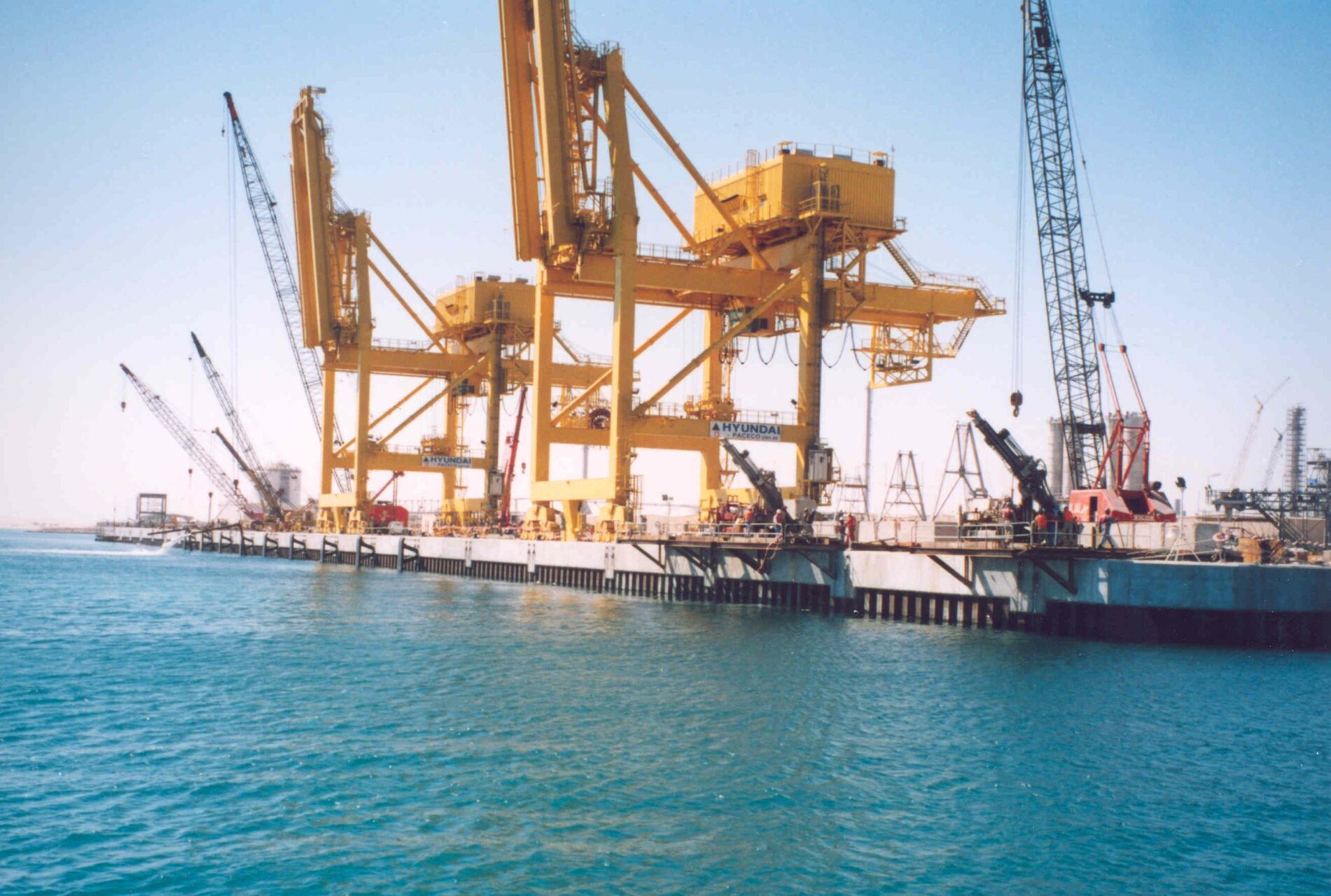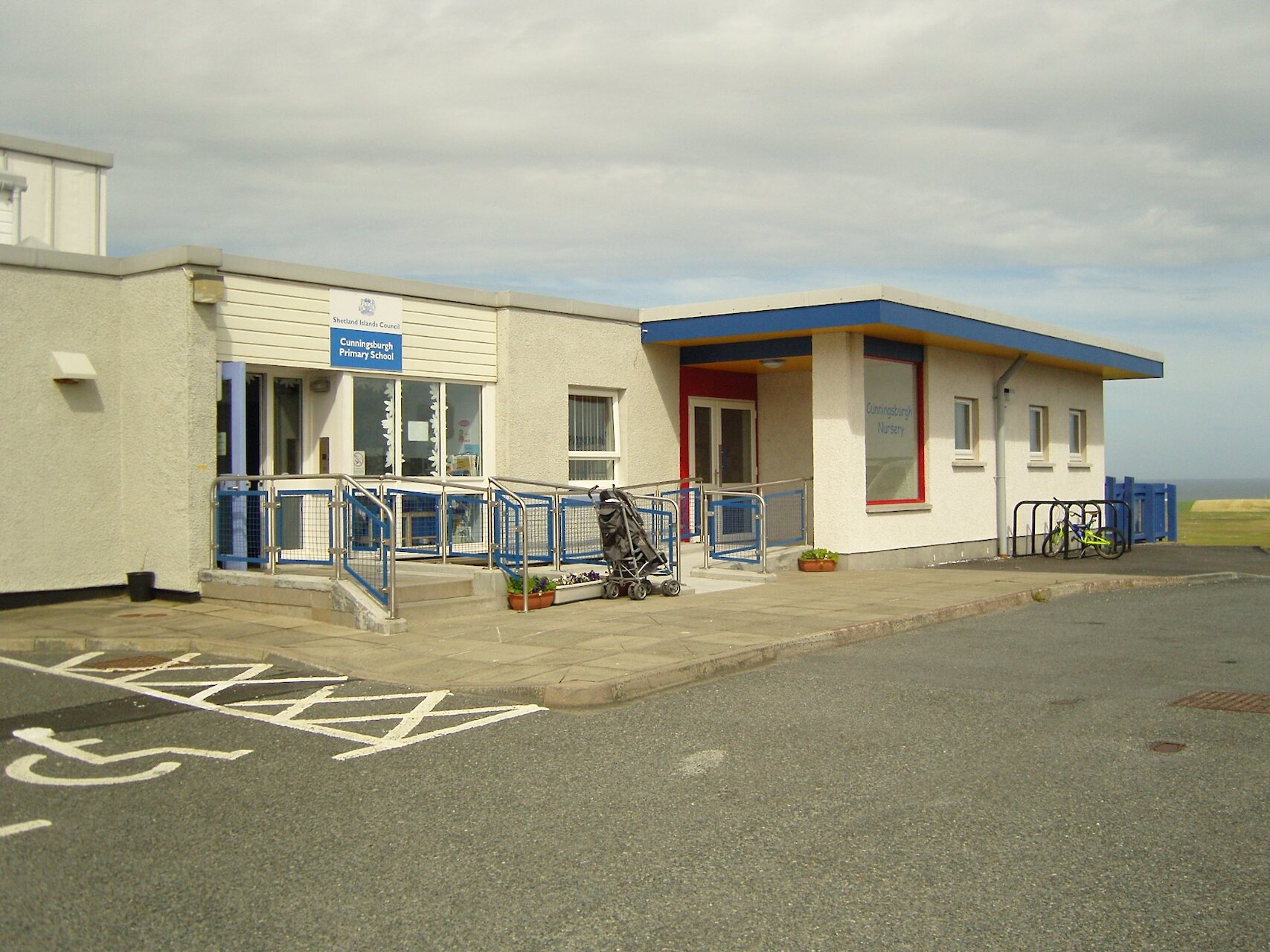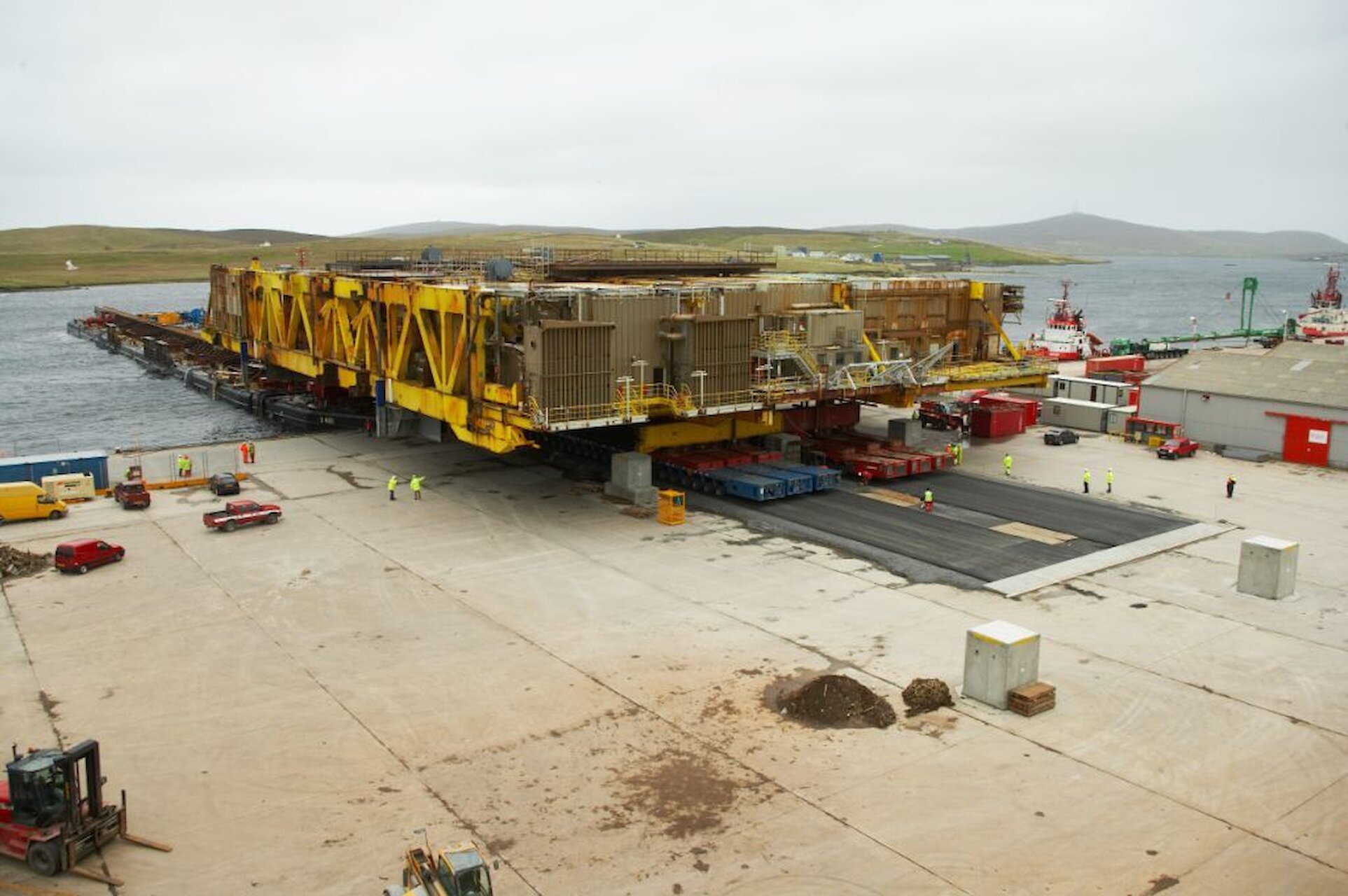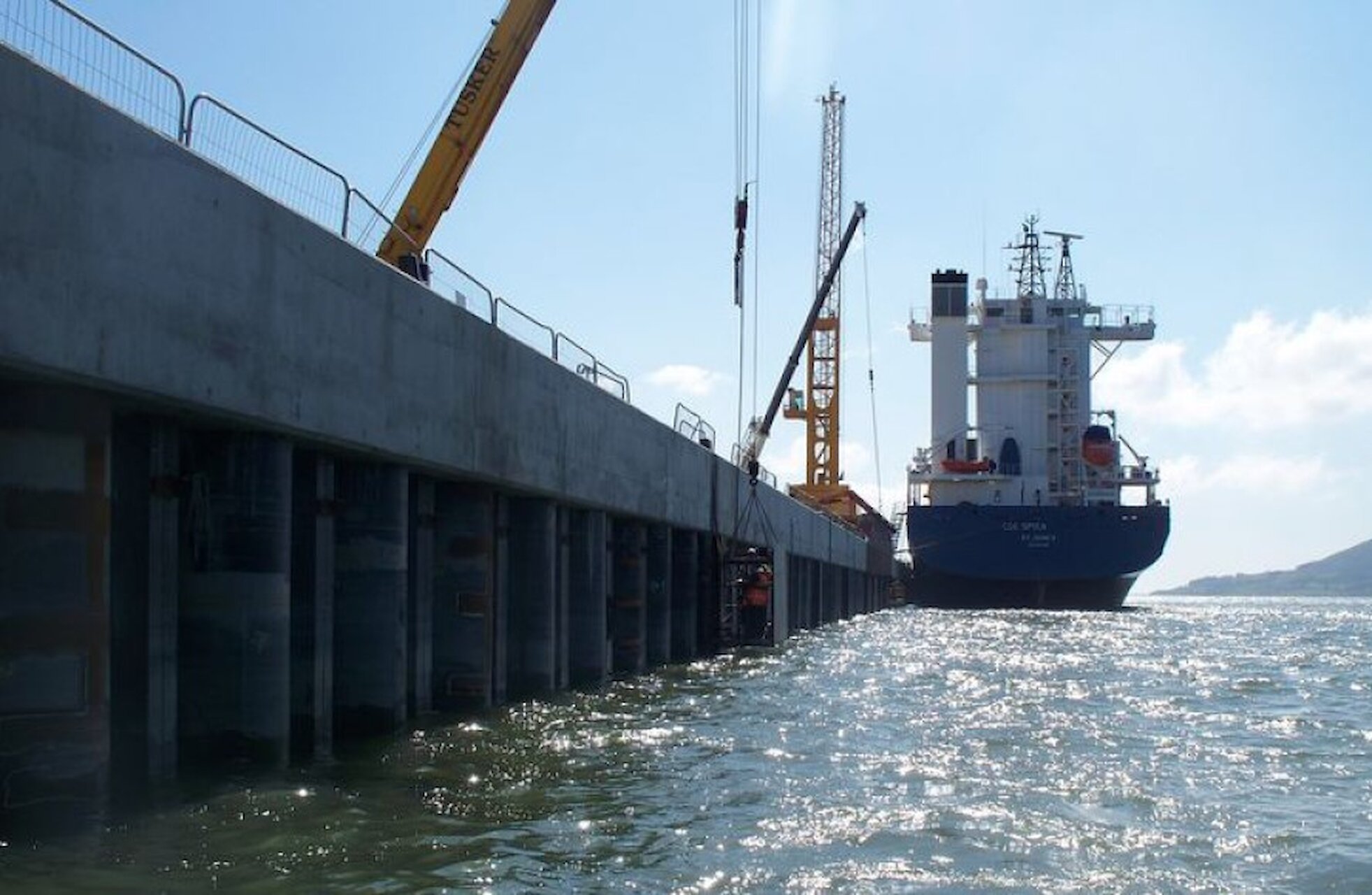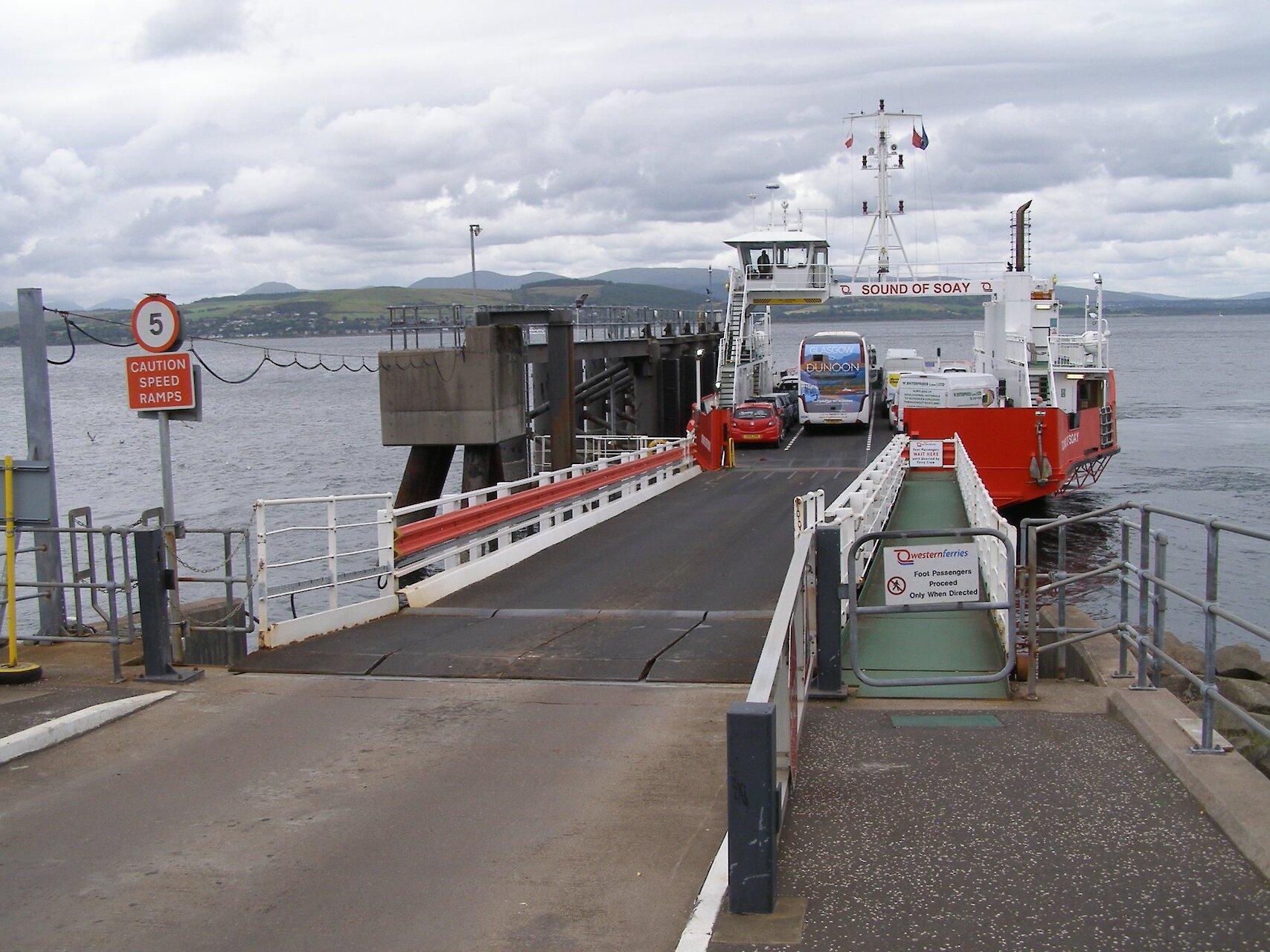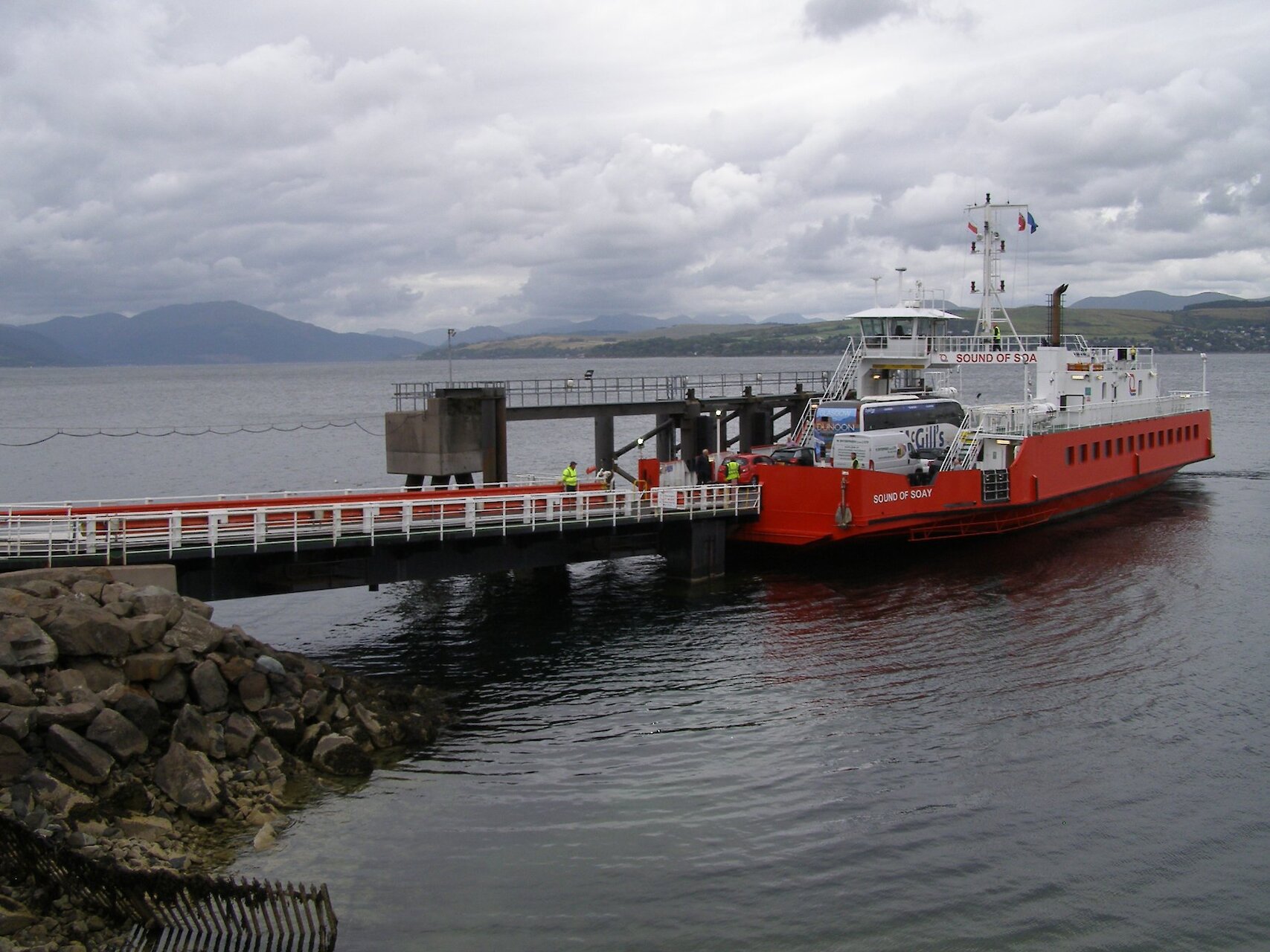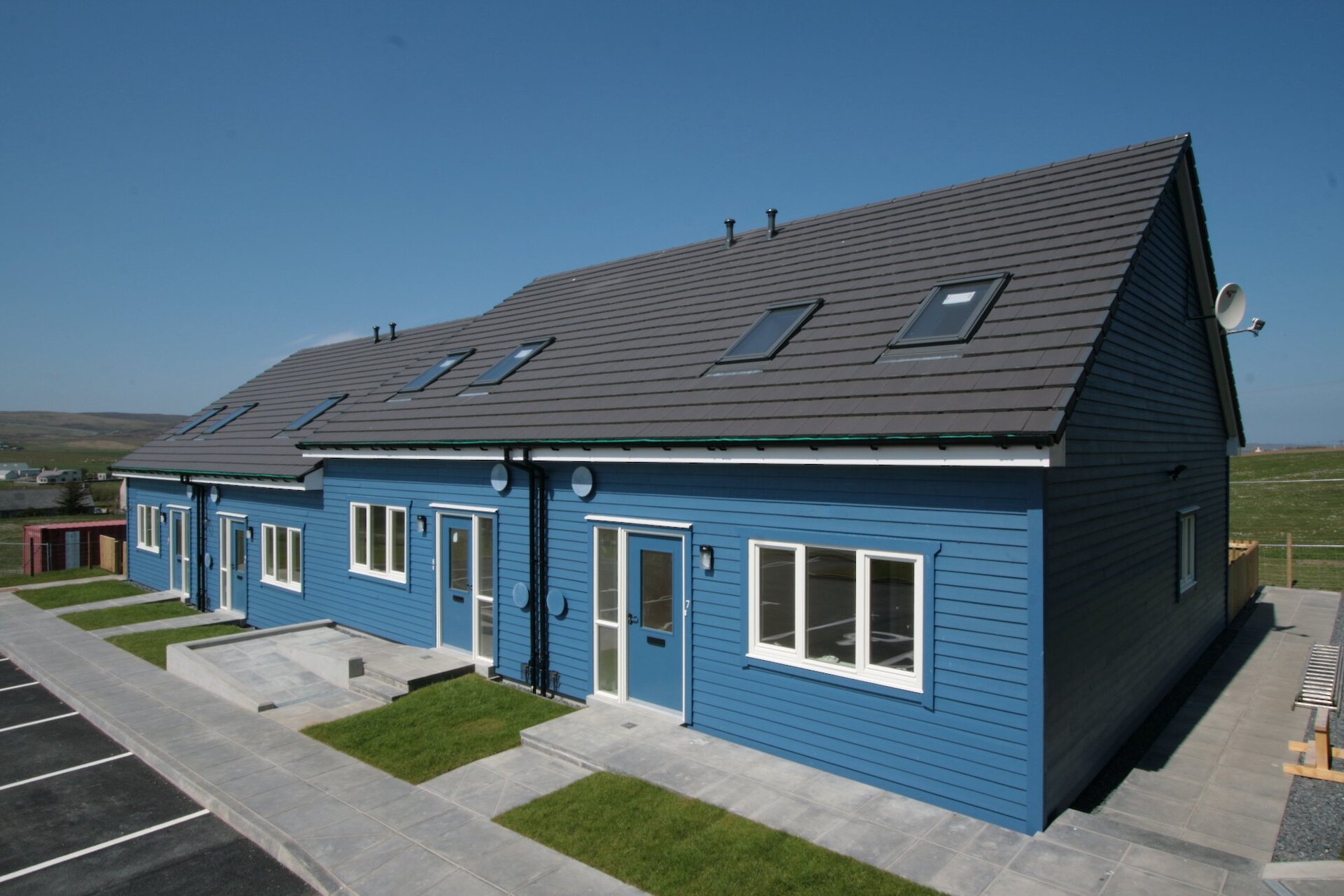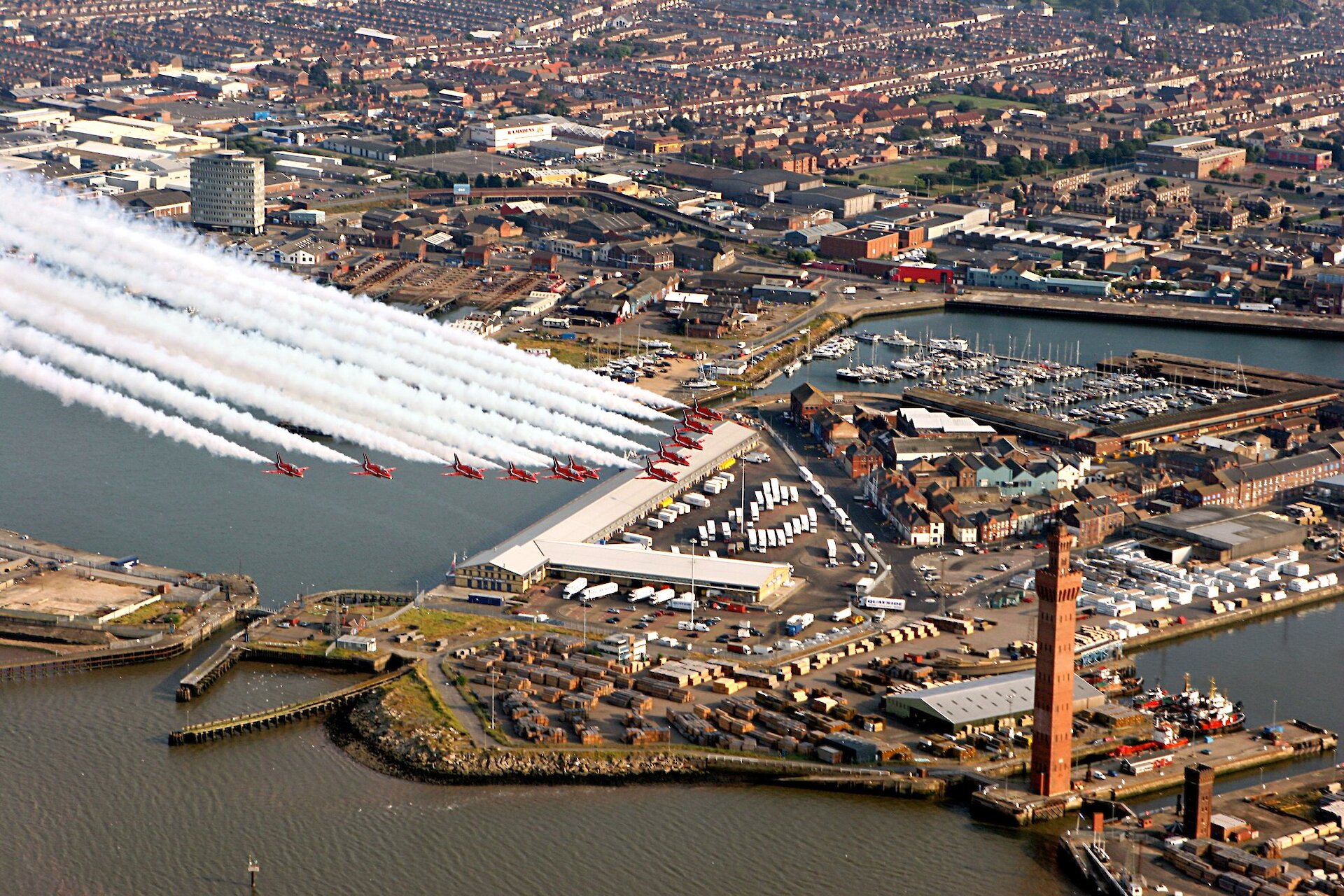During the 21st Century the company continued to expand and diversify, adding major architectural and infrastructure projects to its portfolio and increasing its presence internationally.
At the start of the 2000s, Arch Henderson was heavily involved in the harbour works needed before new ferries could be introduced on the Northlink services to Orkney and Shetland. New passenger terminal buildings were designed for Aberdeen and Lerwick; new linkspans and pier alterations were carried out in Stromness and Lerwick, and all three terminals were provided with pedestrian access walkways. But the largest project was in Kirkwall where a new pier, linkspan, terminal building and access walkway were constructed at Hatston. These projects had to be completed to a very tight timescale to be ready in time for the arrival of the new ferries, resulting in a very busy time for the firm.
CalMac work continued with the major redevelopment of one of the operator’s key assets at Oban where Arch Henderson designed the new pier, linkspan, structural engineering for the terminal building and acted as project manager for the whole facility. Other CalMac work included the rebuilding of the historic Largs pier, and work on the Cumbrae slipway; and on a new overnight berth at Lochranza on the Isle of Arran, for the ferry crossing the Kilbrannan Sound to Claonaig on Kintyre.
As well as acting for CalMac, the firm took on two significant projects for ferry terminals on CalMac routes but owned by Argyll & Bute Council. At Dunoon, the firm designed a 160m long breakwater pier, a new linkspan, and marshalling facilities beside the Victorian timber steamer pier. At Port Askaig, Arch Henderson designed a new harbour, with an extended berth, a replacement linkspan, a new slipway and marshalling and parking for the ferries running from Kennacraig on the mainland, and also the much smaller ferry serving the nearby island of Jura.
Back on the Clyde, the firm designed new berths for Western Ferries for their terminals at Hunter’s Quay and McInroy's Point, Gourock. In shipbuilding, the firm worked for BAE systems on a number of projects at their Scotstoun and Govan yards in support of their work on the Type 45 Destroyer programme and on the Royal Navy’s two new aircraft carriers.
In Shetland, work began on preparing for the decommissioning industry, with the strengthening of quays and the provision of lay down areas. The increase in demand for marine leisure facilities led to the design of a new quay for Delting Marina in Brae, with a similar project for Burra.
Arch Henderson’s architectural work continued to grow with the number of architects employed increasing. They were of course heavily involved in the firm’s traditional work such as that on ferry terminal buildings and fish markets, but the workload in less traditional areas grew. The firm’s appointment in 2004 as term consultants to NHS Grampian led to work designing a community gymnasium in Dufftown, a renal dialysis unit in Inverurie and the new MRI suite at Aberdeen Royal Infirmary. The architecture team also worked on alterations to a primary school in Shetland.
The 2000s saw many changes in the Partnership. David McBain and Douglas Clarke became Partners in 2000. David McBain, an Aberdeen based architect, was the first Partner who was not an engineer. Douglas Clarke had worked for the firm in the Thurso office since 1994. In 2001 Ron Still became the Senior Partner when John Wilson retired, and Ron subsequently retired in 2005, with John Carmichael stepping into the Senior Partner role. Glasgow based Alan Kilbride became a Partner in 2003, as did Shetland based Andy Sandison, in 2005. And later in the decade, John Carmichael handed over the Senior Partner role to Grant Alexander in 2008, before he retired in 2009.
The appointment of a second Partner in the Thurso office was the result of expansion and diversification of the office to provide multi-disciplinary engineering and architectural services. As a result of the growth in workload and staff, the office moved to larger premises in Princes Street, in 2006. The expanded Thurso office allowed the firm to maintain a strong local presence in the North of Scotland and in Orkney, undertaking multi-discipline projects using a locally based workforce.
The workload won by the Glasgow office continued to grow with staff increasing annually to swell the office space. The office had to relocate twice in this decade, staying in the same business park in Clydebank but moving to increasingly larger premises.
